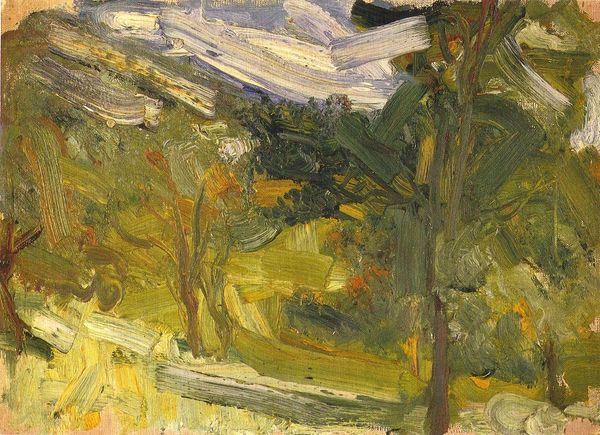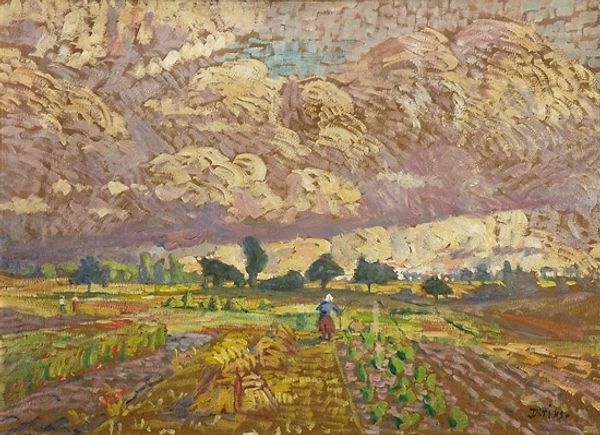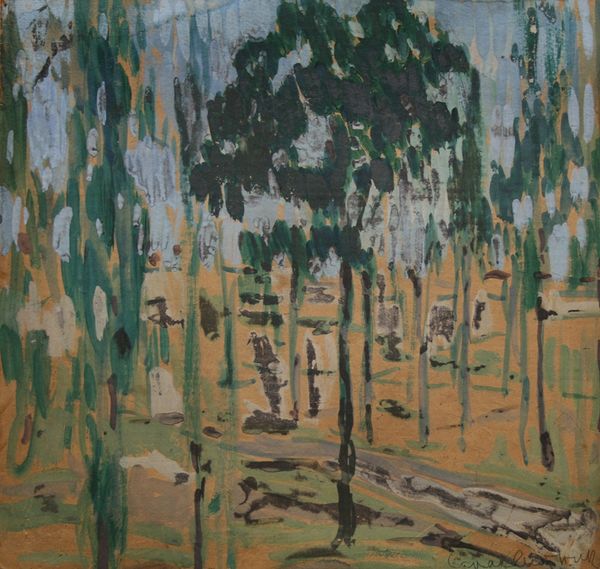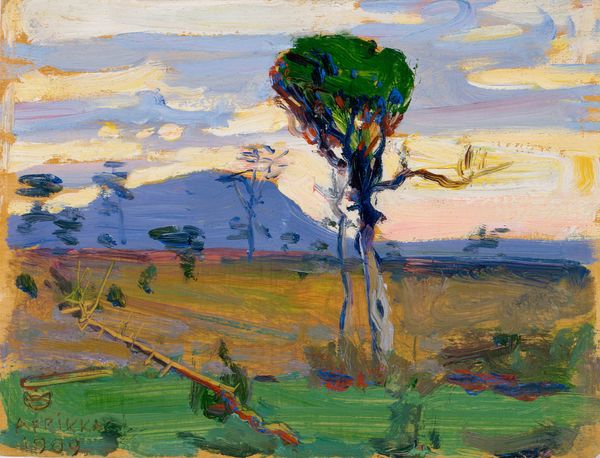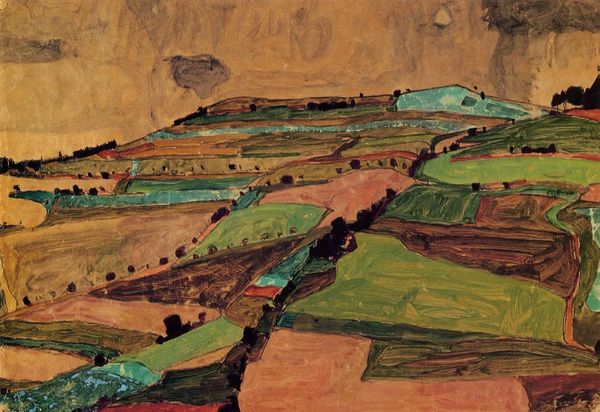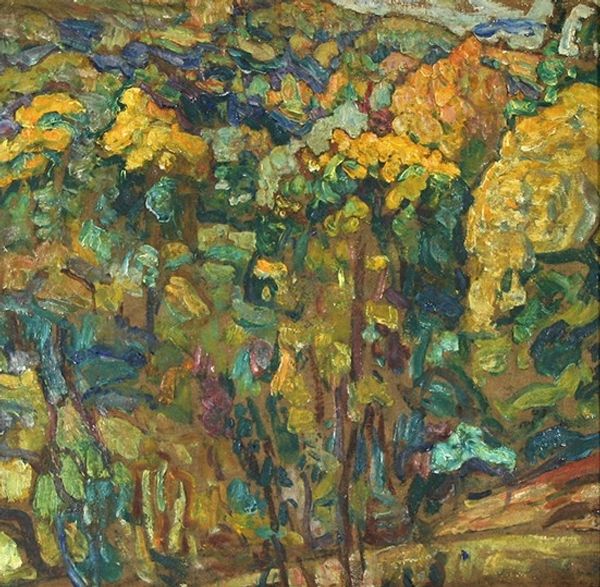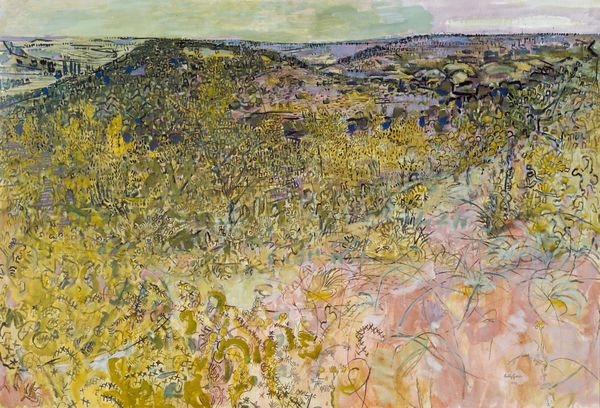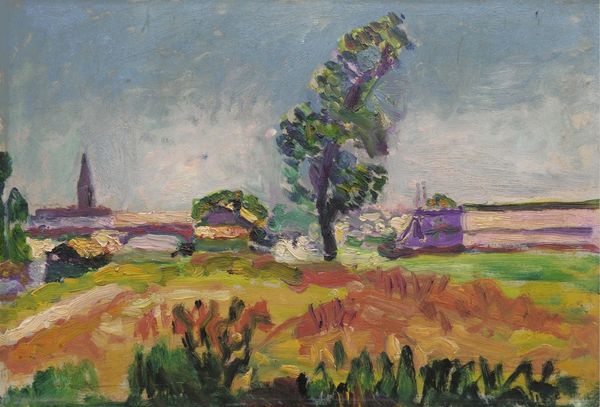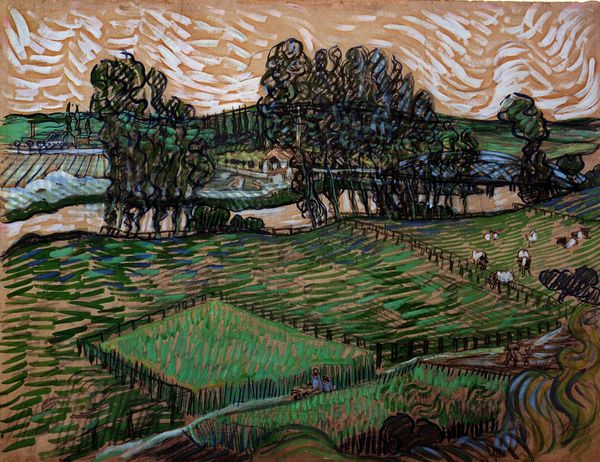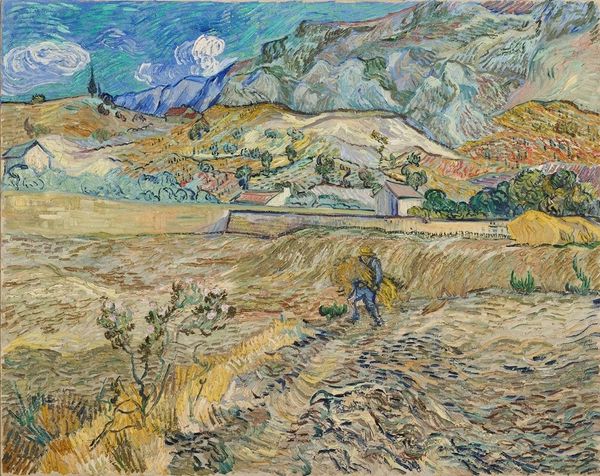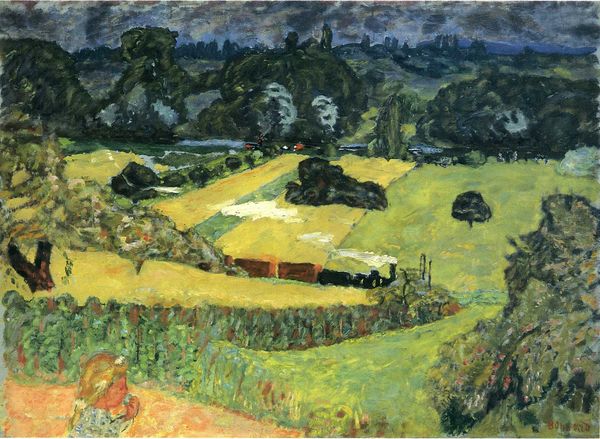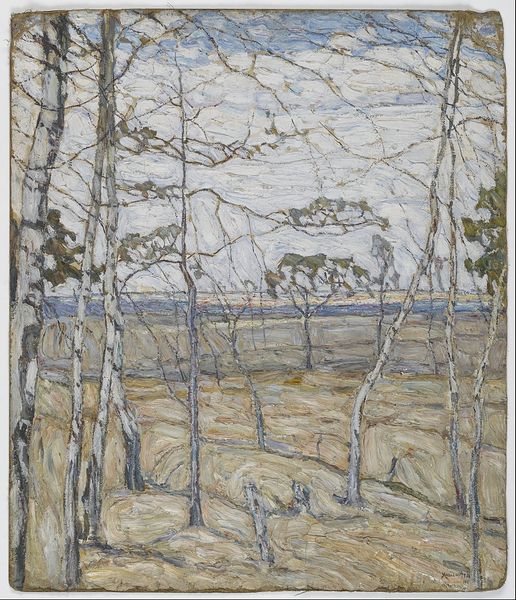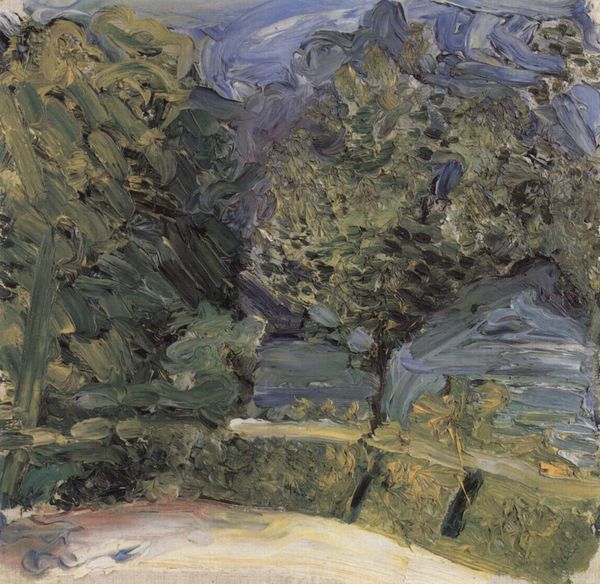
Copyright: Public Domain: Artvee
Curator: What catches your eye immediately in this "Extensive Landscape With River," painted in 1917 by Childe Hassam? Editor: The layering. It's a fascinating mix of chaotic strokes in the foreground leading into these serenely spacious planes receding into the distance. Is that the intention, perhaps? The unsettled versus the settled? Curator: Hassam, aligned with the American Impressionists, often wrestled with balancing the rapidly changing urban landscape with a nostalgic yearning for simpler, rural life. Consider the role of industry and commerce in the piece. Editor: The logjam by the river certainly symbolizes something industrial or commercial. Note also how even the horse and rider almost seem part of an agricultural symbol. And I can feel how it echoes traditional depictions of harvest or transportation of goods. It could even signify labor and the rural workforce. Curator: Hassam lived in a time where agricultural jobs shifted towards industry; there was this sentiment of "passing" and remembering, or idealizing, what used to be a primary means of American existence. I believe this piece uses that symbol as both present reality, while longing for that pastoral time. Editor: I suppose you can see this reflection not just in his composition but also technique. It has a watercolor's fluidity and light-capturing ability combined with the textural impasto style we associate with oils. A bridge between transient and more substantial art forms mirroring that agricultural evolution you mentioned. Curator: And painted en plein air, this immediacy that directly connects the artwork to nature and the real environment is something he does well. It brings out how that interaction between man and landscape reflects an ongoing dialogue about progress versus preservation, which still is debated in art and the real world today. Editor: It's truly thought-provoking, the layers of historical context that have settled, much like sediments along a riverbed. And in an era where natural resources are even more imperiled, reflecting on these paintings could serve as warnings and awakenings. Curator: Absolutely, Hassam was very intentional and a sharp commentator, reflecting the socio-political tensions that still resonate strongly today.
Comments
No comments
Be the first to comment and join the conversation on the ultimate creative platform.
